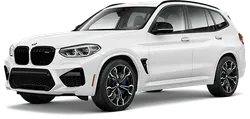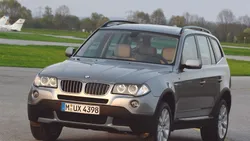

BMW X3 Generation 1 E83 Facelift 2006 Overview
Explore the BMW X3 Generation 1 E83 Facelift 2006, featuring its design, performance, and specifications. Learn more about this model's unique traits in Portugal.
The BMW X3 Generation 1, also known as the E83, represents a significant shift in BMW’s approach to SUVs when it first hit the market in 2003. However, it was in 2006 that this compact SUV received a fa...
Technical Specifications
Select Version
Dimensions
Engine
Driving
Others
History and Features
Mycarro AI
Apr 26, 2025
The BMW X3 Generation 1, also known as the E83, represents a significant shift in BMW’s approach to SUVs when it first hit the market in 2003. However, it was in 2006 that this compact SUV received a facelift that refined both its aesthetics and performance, ensuring the X3 remained competitive in an ever-evolving automotive segment. The 2006 facelift aimed to address some of the criticisms of the original model while enhancing its appeal to consumers seeking a blend of utility and luxury.
Evolution of Design
One of the most noticeable changes in the 2006 facelift of the BMW X3 E83 was its exterior design. The facelift emphasized a more contemporary and aggressive look, featuring updated headlights that incorporate a more modern lens and a fresh front fascia. The rear lights were also redesigned, enhancing the visual appeal without drifting too far from the original design language. Additionally, BMW introduced new color options and alloy wheel designs, allowing customers to personalize their vehicles. These updates resulted in a more polished look that appealed to both new customers and loyal BMW enthusiasts.
Interior Enhancements
Inside the cabin, the facelifted E83 showcased improvements in terms of materials and technology. BMW made a conscious effort to elevate the interior quality, integrating higher-grade plastics and soft-touch materials. A noteworthy upgrade was the introduction of the iDrive system to manage various multimedia functions, though it was not without its controversies regarding usability. The seating comfort and layout remained a hallmark of the model, offering ample space for passengers and cargo alike. Luxury touches such as optional leather upholstery and advanced sound systems further positioned the X3 as a premium offering in its class.
Performance and Engine Options
Under the hood, the BMW X3 Generation 1 (E83) facelift came with a selection of engines that catered to a range of preferences for performance and efficiency. The lineup included four-cylinder and six-cylinder options, ensuring consumers could choose based on their desired driving dynamics. The X3 2.0si and 3.0si models received significant power upgrades, which not only improved acceleration but also enhanced overall drivability. The SUV also came with various transmission options, including a six-speed manual and a six-speed automatic, further adding to its versatility.
Driving Dynamics
The driving experience offered by the facelifted E83 continued to embody the BMW philosophy of delivering sporty handling in a compact SUV. The X3 was built on a car-like chassis, and this design ensured it maintained a low center of gravity, which contributed to its agile and responsive handling. The introduction of enhanced suspension components further refined its performance on both highways and winding roads. For those who needed additional capability, the X3 also offered an all-wheel-drive option known as xDrive, which enhanced traction during challenging driving conditions.
Safety Features
Safety is an essential consideration in any vehicle, and the facelifted BMW X3 E83 was equipped with numerous safety features to protect its occupants. Standard features included multiple airbags, ABS, traction control, and stability control systems. In 2006, BMW aimed to surpass its competitors by incorporating enhanced safety technologies that further solidified its reputation for building secure and reliable vehicles. The X3 achieved high safety ratings in crash tests, contributing to its appeal among families and safety-conscious drivers.
Market Impact and Legacy
Upon its release, the facelifted BMW X3 E83 attracted both loyal BMW customers and newcomers to the brand. Its blend of sporty performance, luxurious interior, and enhanced safety allowed it to carve out a formidable niche in the compact SUV market. As consumers increasingly prioritized versatility in vehicles, the X3’s ability to cater to both urban and off-road aspirations solidified its position. Over the years, the first-generation X3 has paved the way for subsequent models in the BMW lineup, establishing a legacy that remains evident in the more recent iterations of this successful series.
In conclusion, the BMW X3 Generation 1 (E83) facelift of 2006 is an exemplary model that showcases the brand's ethos while finding balance in performance, luxury, and practicality. It served not only as a pivotal point in BMW’s SUV strategy but also as a compelling choice for drivers seeking a versatile yet premium compact SUV.
